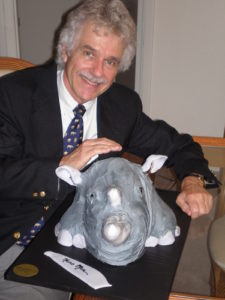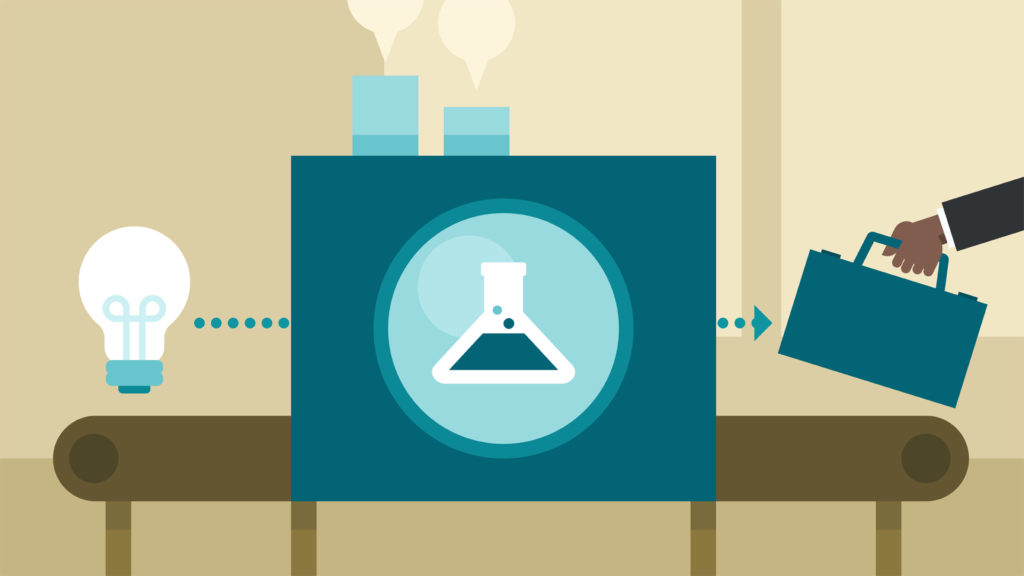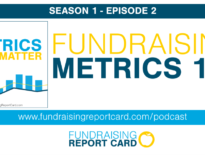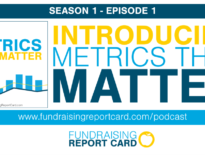How does your organization currently raise major gifts? Do you go out to lunch with key prospects? Are you wealth-screening your database and then engaging with those who have the highest “score?”
How are successful and growing nonprofits raising major gifts? If they rely solely on wealth screening and occasional one-to-one meetings they’ll either get lucky or be wrong. Which is unfortunate, because one thing you learn quickly about our sector is that there is a general lack of resources; time, budget, and staff to name a few. Most fundraisers can’t afford to travel and meet the wrong prospect — it’s simply too expensive.
Regardless of what tactic you use to prospect, most everyone agrees that raising major gifts (and planned gifts too) is relationship-driven. What makes this seemingly obvious observation complex is that gift officers and fundraisers who facilitate raising major gifts need to build a relationship between their organization and their prospect, not between themselves and the prospect. This subtle distinction is often the cause friction and anxiety at many nonprofits.
You might think of the Fundraising Report Card® blog as being solely focused on data and metrics, but over the next few weeks we’ll be discussing relationship building and major gifts. We’ll approach these topics with research and share only information that is validated by data. If your organization aspires to raise more major or planned gifts, you’ll want to make sure you’re subscribed to get email updates. This will be a three part series.
Let’s dive in.
Knapp’s Relational Model

Relationships are tricky. They’re also scientific. Many smart people have dedicated their lives to researching and understanding why human beings interact with one another. One such researcher, Dr. Mark Knapp, has provided incredible insight into the reasons why (and how) humans build relationships. Dr. Knapp is the author of Nonverbal Communication in Human Interaction and, Interpersonal Communication and Human Relationships, among others. His work is world-renowned, revolutionary, and practical.
Once you learn Knapp’s relational model, it becomes clear that it should be the baseline for how organizations raise major gifts. The model, a ten step process for relationship development, is broken into two phases — coming together and coming apart. The steps described in the model should be conducted one at a time and in consecutive sequence to make sure they are effective. It’s also important to note and understand that the steps describe what seems to happen and not necessarily what should happen.
The 5 steps of coming together are:
- Initiating
- Experimenting
- Intensifying
- Integrating
- Bonding
For part one of our three part series on raising major gifts, we’ll walk through each of these five steps. Next week we’ll discuss the implications each have with regard to your constituents, and finally, during week three we’ll describe specific tactics you can use to facilitate moving supporters through each of the five steps.
Raising major gifts, and securing planned gifts can be greatly aided by following Knapp’s relational model. The challenges we’ll face are plenty, and we’ll describe them below, but bear in mind that as a fundraiser one of your primary responsibilities is simply facilitating a supporter’s experience through this process.
Initiating

Relationships have to start somewhere, and that “somewhere” has a distinct name in Knapp’s relational model — initiation.
Knapp’s research suggests that the initiation stage lasts a mere 15 seconds. The old adage “dress to impress” has never been more true. Old-school sales training preaches the importance of meeting a prospect in your finest suit and tie. Does Knapp’s research back that up?
First impressions are important, and wearing nice clothing can potentially play a role in that, but why is it so important? Knapp’s research shows that during the initiation step, individuals strive to remove uncertainty from a situation. By reducing uncertainty we become more relaxed and comfortable. When we are relaxed and comfortable we’re open to sharing more information about ourselves.
Does appearing clean, responsible, and not disheveled help enable this? Most likely. Physical, and more frequently digital, appearance play a role in this stage of relationship building, and every prospect needs to be considered a unique case. When engaging with anyone on behalf of your organization it is best to appear disarming and friendly.
If you’re in Silicon Valley raising funds from local venture capitalists you may want to wear a t-shirt and jeans — that will help your prospect reduce uncertainty, “Oh, she’s one of us.” But, if you’re in New York City you may want to consider your nicest suit.
The initiation step happens both physically when you meet in-person with a supporter, and digitally when your supporter engages with you or your organization online. This means that copywriting and design also play a role in the initiation phase. Your organization has 15 seconds to make a positive first impression. It’s also helpful if your own tone and demeanor match the “brand” of your organization. This helps your constituents feel continuity and integrity in the organization’s image and mission.
Experimenting

After initial first impressions have been made, individuals generally begin to “experiment” with one another. The experimentation stage of Knapp’s relational model describes the process of self-disclosure, also known as “small talk.”
We’ve all experienced it — you meet someone new and after introducing yourself you begin to discuss the weather or current events. This back and forth conversation, ebbing and flowing from yesterday’s high temperature to weekend plans to mutual interests, is part of the experimentation phase. Most of the time your conversation swiftly ends after discussing how warm it’s been recently, but on occasion you may genuinely hit it off with the other person and the conversation keeps going.
It’s important to note that Knapp’s research has found that most all relationships never make it past this stage. If two parties cannot find alignment during this mutual self-disclosure process then they will fade away. If, on the other hand they do find areas of common interest or experience they may come closer together.
Essentially, after making initial conscious and subconscious judgements of another person, we then attempt to identify if our values and experiences are aligned. If they are, great! If they aren’t, we move on.
How does this apply to developing a relationship between an individual and organization? It’s challenging to execute, but relatively simple to comprehend. We need to learn if a supporter shares a common interest in our organization’s mission and vision. As a representative of your organization, can you share distinct examples and stories of the organization’s mission at work? Does the person you are engaging with show alignment? Can they share their own stories and experiences that align with the mission? If the answer is yes, then the relationship has a chance of making it to the next step.
Intensifying

After small talk comes more intimate conversation. During the intensifying step of the coming together process the two parties involved dive deeper into experimentation and self-disclosure. Whereas prior discussion related to relatively high-level, non-personal experiences and emotions, the intensifying stage begins the process of sharing more personal details.
During this step of relational development both parties strive to identify if there is mutual affection and attachment. Do we both share the same interests, and have our experiences shaped us similarly?
It’s also during the intensifying stage that Knapp found individuals secretly “testing” one another to confirm that they should intensify the relationship. (Baxter, L. A., & Wilmot, W. W. (1984). Secret tests. Human Communication Research, 11, 171–201.) There are 5 distinct “tests:”
- Endurance – in which a partner is placed in an unpleasant, inconvenient, or uncomfortable situation or respond to certain requests to determine his or her commitment to the relationship.
- Public presentation – during which a partner is introduced under a particular label such as “boyfriend” or “girlfriend” to see if they are comfortable with being identified in this manner.
- Separation – which tests whether communication and feelings of affection will continue despite an inability to physically be together.
- Third-party questioning – where one partner may attempt to find out the hidden feelings of the interested party indirectly by asking a friend to probe the person of interest for indication as to their depth of feeling and affection.
- Triangle tests – in which one partner sees if they can elicit jealousy from the other partner when another person expresses interest in the person concocting the test.
- Moving prospects through these steps in a scalable fashion is mind-boggling
- Building a relationship between your organization and a prospect, not the prospect and the fundraiser is puzzling
- And, how are you supposed to know who is at what step at what point in time?
These tests, which frequently arise in all relationship development are not necessarily constructive, and they can even be destructive during this stage. And yes, they all sound similar to high school romance, but they have practical applications for our professional work as well.
Knapp’s research does not prescribe that these tests must be conducted in order to advance a relationship, rather, it suggests that most people put themselves through these tests while going through the process. Giving pyramids, legacy societies, and other organizational constructs generally make it so that your organization’s relationship with a prospect is put through at least some of these tests.
Prospects may test your organization too. Triangle tests, where one partner attempts to elicit jealousy from the other when receiving attention from another party are common place. How many of your major gift prospects have deep roots with another similarly missioned organization? As you develop a relationship with a prospect don’t be surprised if they flaunt or show their alignment with another similar organization too.
And, no matter how hard we strive to develop relationships between an individual prospect and our organization, inevitably a relationship will develop between the prospect and the fundraiser. It is important to be cognizant of the fact that you, and your prospects may consciously or subconsciously conduct these tests on one another!
Integrating

Relationships that make it to the integrating stage are few and far in between. After disclosing personal and intimate information both parties involved agree that there is alignment among them. “Maintenance mode” can kick in at this stage, and many relationships stay at this integration phase for extended periods of time as the two parties become more and more intertwined in one another.
Social identities, such as Facebook profile pictures, tweets, and photos show the two parties connected. And it is during this step in the coming together phase that the two parties share secrets, and the most intimate information they have.
Take for example a supporter who recently began retweeting your organization’s tweets. That prospect wants their social identity tied to your organization. If your organization hold events, or ties in with political causes, you might want to look for prospects who attend galas, participate in protests, or interact with your organization in other public ways that show their alignment with your cause. These are supporters who want to flaunt their connection to your organization and show others that they are connected to you.
When thinking about developing a supporter to organization relationship at the integration step these are all examples of what it might look like.
Bonding

The fifth and final step of Knapp’s relational model describes the moment when two parties put their relationship on public display. You can think of this as a marriage certificate, or, more practically for our professional work, a supporter sharing their planned giving intentions and documenting them.
Just because a relationship reaches this bonding stage does not necessarily guarantee it will stay there. It’s important to remember and note that Knapp’s model also has a coming apart phase…
Applying Knapp’s model to professional situations
Knapp’s model is not terribly complex, and as you read through it you probably couldn’t help but think back to your own personal relationships. The model, and the steps within it, are quite straightforward and practical. What then makes it so difficult to build relationships between organizations and supporters? It’s simple:
Fortunately over the coming weeks we’ll be addressing all three of these challenges. In the meantime, it’s important to remember that Knapp’s model provides the guidelines we need to follow.
Yes, a lot of what we shared today might feel like the steps you take to fall in love, but essentially that is what we are after when it comes to engaging prospects. Successful, sustainable, and growing nonprofits facilitate relationship development using this model, and before we start discussing strategies and tactics it is prudent to know exactly what the steps are.




